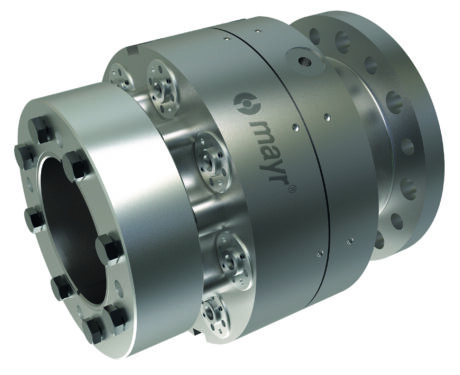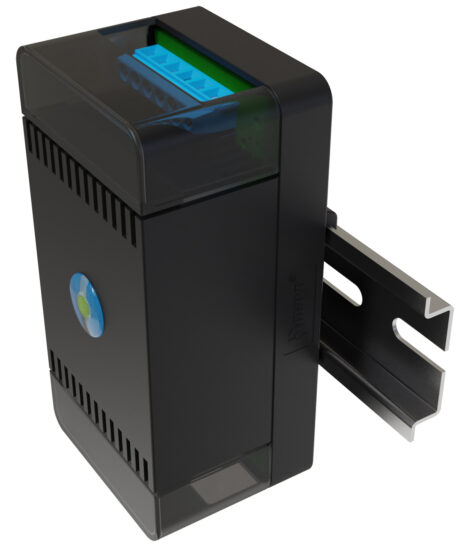Showcased at recent trade fairs, the brakes, couplings and electronic components by Mayr, are valuable supports for industrial designers in the mechanical engineering sector. We talked about these innovations with Bernd Merk, Sales manager at Mayr’s headquarters in Germany.
The new ROBA-linearstop series of linear brakes is appreciated in several industrial fields, such as machine tools, robotics, automation and packaging. What properties of these brakes make them suitable for these applications?
Our standard range of linear brakes is wide enough to include the perfect brake for most applications; using such online tools as our product configurator, or with the help of our sales experts, it is possible for industrial designers to choose the ideal component for their project. Our linear brakes travel on rods, making the independent from the power train in many applications. In this way it is possible to achieve a highly rated redundancy.

We provide several different power sources to release the brake (hydraulic, pneumatic, electromagnetic). This allows us to offer the right brake for any given circumstances. Mayr is the only supplier who can offer an electromagnetic linear safety brake (fail-safe brake). This is a unique feature. The brake is easy to integrate, maintenance-free and, with the optional release monitoring, it provides important information about the status.
What advantages do Mayr brakes bring to the clients’ production processes?
All the applications have one thing in common: the need for a higher safety level. ROBA-linearstop can contribute to achieve a very high level of safety.
ROBA-servostop brakes are ideal for cobots and applications with brushless motors. Which features of these components are held in the greatest consideration in these segments and why?
ROBA-servostop brakes are extremely compact and can therefore be integrated directly into the motor, the gearbox or the arm for a robot for example. The brake can withstand high temperatures transferred from the motor and still provide the required brake torque. ROBA-servostop follows the fail-safe concept and due to the friction pads it is suitable for dynamic stops, such as, in case of a power failure or a controller failure. With the ROBA-servostop Classic, the ROBA-servostop Cobot and the ROBA-servostop Lean version we can provide customers with a wide range of the servostop brakes within a short lead time. ROBA-servostop Cobot is the perfect solution for Lightweight robots with hollow shaft design. The low energy consumption of the brake is also a great advantage for many customers. This is especially the case as our brakes are designed to operate with a voltage reduction as soon as they are released.
Our long-term experience in many different servostop applications is the foundation for the support of our customers, even in applications with tight requirements like the medical industry.
Regarding ROBA-stop-M Eco, what are its most interesting features?

ROBA-stop M Eco is the perfect product expansion for our customers who appreciated the safety, robustness and reliability of the ROBA-stop M brake but do not need a customized solution. The Roba-stop-M concentrates on the basic functionality of a safety brake. The Eco version is the right product for a high volume production where the need is felt for most economical solution – again, without compromising on safety and strength.
What additional advantages can ROBA-stop-M Eco bring to companies using motors and hoists, and under which conditions is it most suitable?
Even in this most cost-efficient version of ROBA stop M brake, Mayr can provide functional safety parameters (MTTFd/B10d) acc. DIN EN ISO 13849-1 for the holding brake which is essential for applications like hoists. As we mentioned before, the requested quantity plays an important role here. ROBA-stop-M Eco is the perfect product for customers who do not want to compromise on safety but appreciate the features of an off-the-shelf, reliable product.
Mayr does not only manufacture brakes, of course: EAS-HSE safety couplings, for instance, are essential in many segments, as bench test makers know well. What peculiarities of these couplings make them just right for this industry?
The EAS- HSE clutch is our high speed overload clutch.The test industry these days has to deal with very high speed requirements, especially with the growing importance of electrically powered vehicles. For example, while a test stand for combustion engines sees speeds up to 7000 rpm, a test stand for electric motors (EVs) has to accept speeds up to 25.000 rpm. This was also a reason for us at Mayr to further develop our EAS high speed element clutch: EAS- HSE. The safety clutch differs from all other series both in terms of design and manufacturing technology.
Another point is the direct mounting of our steel disk pack coupling ROBA-DS 9110/9210 for different sizes of flanges and torque transducers, by means of which we can avoid further intermediate adapting flanges.

Finally, weight is of course a crucial factor, especially for applications with very high speed. Due to the compact design with integrated overload elements and an optimized size scaling, related to the different flange sizes on the market, we can achieve an excellent power density. With the EAS – HSE clutch we can provide the right product, not only for the test industry, but for all industries with high-speed requirements.
Its characteristics in a nutshell are: free run out; high power density; high torsional stiffness; completely assembled balanced; speeds of up to 25,000 rpm; torques from 45 Nm to 11,200 Nm in the standard design.
Last but not least, ROBA-brake-checker: this component is proving highly successful in industries where vertical axes are involved, as well as in the machine tool, packaging and automation sectors. Could you describe the advantages deriving from its adoption?
Data concerning the status/condition of the components in a drive chain represent very valuable information. First of all, the key issue is once again safety!

ROBA-brake-checker does not only provide information about the status of the brake, that is, whether the brake is engaged or released. Such signals, for instance, can be used as feedback signal in functional safety channels, as in vertical axes in machine tools. ROBA-brake-checker is also a source of very important information about the wear condition of the brake. This condition monitoring can even be carried out for very small brakes down to ~2Nm; this is a unique feature, since such a result cannot be obtained by any conventional switches today. In this way, preventive maintenance can be arranged to avoid a longer down time at the wrong time. Before the introduction of ROBA-brake-checker, the only way to detect the status of the brake was by using a micro switch or a proximity sensor. ROBA-brake-checker now allows this to be done by monitoring the voltage, the current, and some other electrical corelations. Also for applications where a higher protection class is required, ROBA-brake-checker is the perfect solution because there is no need for a component with sensors to be installed inside the brake; therefore, the brake can be completely enclosed.



